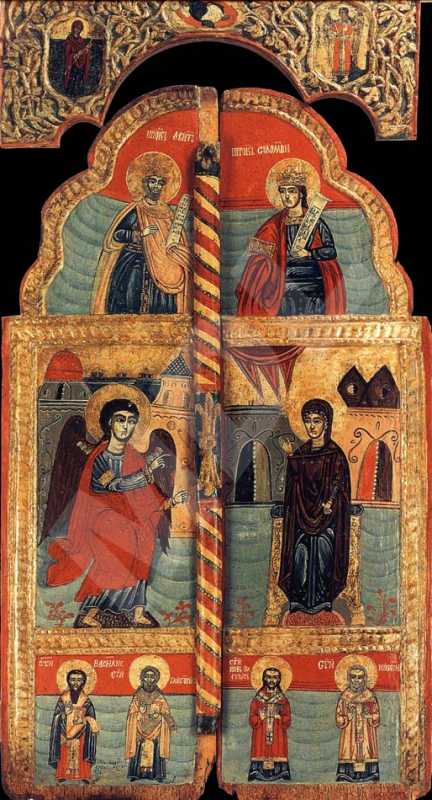Royal doors
Type:
Plastic iconographical object:
Royal doors
Period:
From
the beginning of the
17 century
to
the end of the
18 century
School: Unknown
Dimmensions (cm):
130
/ 78
Location
Country: Bulgaria
Province: Sofia
Town: Sofia
Museum: National History Museum
Source
Country: Bulgaria
Other source: Others
Object identification notes
The royal doors are central in the Orthodox icon screen. They symbolize the division between the celestial and the earthly world. Only the priest is allowed to go in. There is a curtain behind the doors to divide the altar where the holy service is performed and the naos where the congregation is.
The simplified rustic plastic decoration on the door, the painting which comprises big decorative spots and the heavy proportions of the figures show that it was teacher Urosh who did it although there is no autograph. Probably Urosh came from Etropole where there was a Serbian neighborhood in those days and the name was common. He might have been schooled in icon painting in his native town as in those days the Etropole Monastery had an icon painting studio with a wide range of creative potential. Teacher Urosh's stylistics shows kinship to some icons from the more primitive trend of the age.
Description
The first upper tier of the altar doors presented here depicts the kings David and Solomon; the second tier is given to The Annunciation; the bottom tier is occupied by the full-size depiction of Basil the Great, Gregory the Theologian, John Chrysostom and St Nicholas. The background of the two ends is blue and orange. The middle section, which is occupied by The Annunciation has blue background with suggested gilded architecture. The door has simple carving all over. The arch over the door is a lace of floral geometric pattern, which is gilded while the background below is blue and orange red. Virgin Mary and Gabriel the Archangel from Annunciation are depicted in small medallions.
Iconographical technique: Tempera
Carving
Base material: Wood


